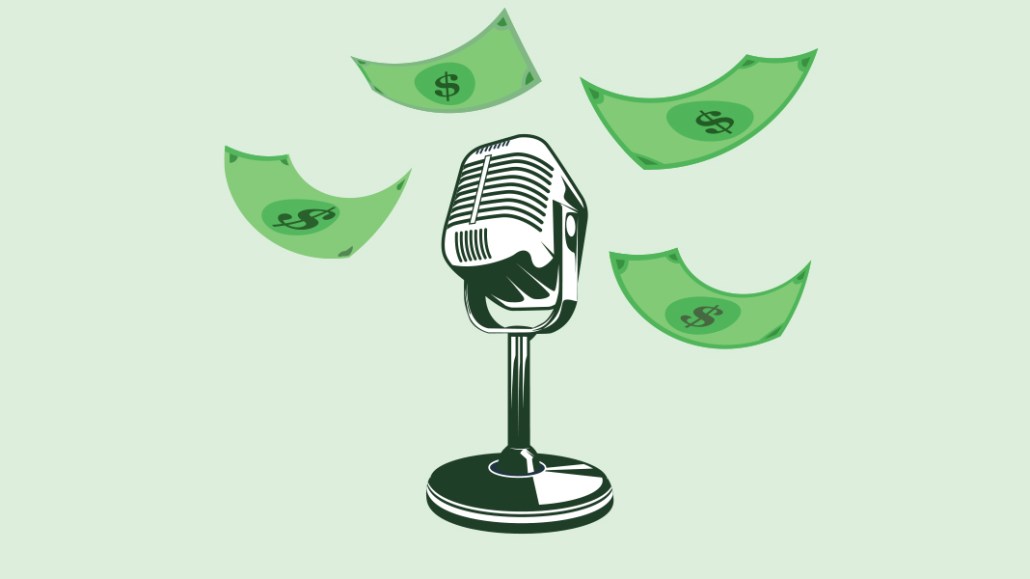Cheat Sheet: Industry executives lament podcast advertising’s challenges during the IAB’s Podcast Upfront

The podcast advertising market continues to be a work in development. That was evident during the first day of the two-day Interactive Advertising Bureau’s Podcast Upfront yesterday.
In between podcast publishers like Blue Wire, NPR and WarnerMedia pitching their latest programming slates, panel discussions dealt with the limitations of host-read ads, the challenges of measurement and the need for advertisers to adopt contextual targeting.
Key details:
- Advertisers feel the limits of host-read ads and are trying to expand contextual ad targeting capabilities, as well as the technology to support programmatic buying.
- Fragmentation is still an issue for podcast advertisers, who want to measure listeners across devices.
- A slate of podcast programming across genres like sports, news and multilingual were announced, coming this fall and next year.
- Revenue from brand focused campaigns represent 45% of all revenue in podcasting, approaching parity with performance and direct response, and dynamically inserted ads and host-read ads continue to dominate the podcasting space, according to Eric John, vp of the IAB’s Media Center.
The effects of fragmentation
While podcast advertising revenue is expected to be more than $1 billion this year, programmatic buying represents less than 5% of that revenue. A big reason for that is the issue of fragmentation, according to Hayley Diamond, evp of U.S. digital investment at Publicis. It was a topic that came up many times during the conference, and especially during the last segment of the day on programmatic podcast advertising.
People are listening to podcasts on smartphones, smart speakers and even “connected cars” (cars that can get 5G and have audio streaming apps built into their infrastructure), said Andre Swanston, svp of media and entertainment vertical at TransUnion. It’s a persistent challenge for advertisers in the audio space to be able to measure listeners across those devices. Multiple audio streaming platforms “makes things quite difficult,” Diamond said.
“There is a need for technology to determine episodic-level targeting and viewer targeting and brand safety and suitability,” Diamond added. “Stitching together the different measurement requirements will help us in this space.”
The host-read holdup
Listeners’ “connection” to host-read ads is another challenge, according to Claire Fanning, vp of ad innovation strategy at SXM Media. Advertisers are struggling to maintain the “authenticity and intimacy” of the host-read ad but overcome the limitations of that native podcast environment (a host will read an ad in their own podcast — which is not a creative spot that can then be programmatically inserted into other podcasts, for example).
Programmatic provides “flexibility, control and speed of execution,” said Regina Sommese, svp of paid media at Discovery. However, it also requires “sophisticated technology,” added Fanning.
As a result, finding a way to combine the merits of host-read ads with programmatic buying processes sounds like it is still a work in progress. Ashutosh Gangwar, gm of inventory partnerships at The Trade Desk, said they are working with publishers like SXM Media to figure out new ways to “automate the process of ad insertion and buying.”
Oddly, for all the grousing about host-read ads’ lack of dynamism, the IAB reported in May that dynamically inserted ads accounted for 67% of podcast ad revenue in 2020 and that host-read ads accounted for 56%. That both dynamically inserted ads and host-read ads represented a majority of the ad dollars going to podcasting suggests that some sizable share of that money is being used to buy host-read ads that are being inserted dynamically.
Contextual targeting to save the day?
Executives said the key to drawing out more podcast programmatic ad revenue is “to expand from audience targeting to contextual targeting,” Fanning said, referring to the approach of buying ads based on what people are listening to versus who they are. Advertisers want to see what a listener’s mindset is when an ad is served, she explained.
While advertisers “can never walk away from audience targeting,” due to the importance of data like the demographics of a listener, “you’d be missing a huge piece of the pie if you were solely focused on the audience and not spending time thinking about the contextual alignment,” Diamond added.
New slates of shows coming in 2021 and 2022
Podcast publishers presented slates of new shows coming this year and into 2022, some of which include:
- New programming scheduled for this fall from WarnerMedia — which oversees brands CNN, TCM, TNT, Turner Sports, Warner Bros. — includes “Total Recall: California’s Political Circus,” which will be hosted by CNN chief political correspondent Dana Bash on California’s 2003 recall election. A new series with Harry Enten, senior analyst for CNN Politics, called ”Margins of Error” will look at data supporting topics like phone phobias and belief in ghosts.
- NPR announced a new podcast with sports analyst and former NBA player Jay Williams on sports, entertainment and culture, and teased another new podcast that will be announced next Wednesday.
- LAist announced that Jacob Margolis — who hosted “The Big One” podcast on the massive earthquake due to hit Southern California — will debut another podcast called “The Big Burn” on the wildfires in California.
- Adonde, which produces Spanish and multilingual podcasts, will partner with Hrishikesh Hirway, the host of the podcast “Song Exploder” (which turned into a Netflix show) for a Spanish spin-off called “Canción Exploder.”
More in Media

What publishers are wishing for this holiday season: End AI scraping and determine AI-powered audience value
Publishers want a fair, structured, regulated AI environment and they also want to define what the next decade of audience metrics looks like.

Media giant Essence launches a marketplace for Black women-led brands
Essence has launched WeLoveUs.shop, a new online marketplace dedicated to Black women-led brands.

In Graphic Detail: The state of AI referral traffic in 2025
The stats reveal a new audience pipeline forming outside of traditional search and social platforms.








